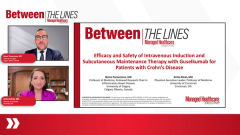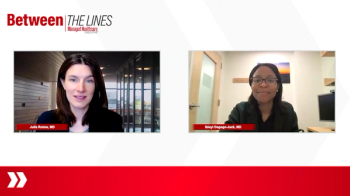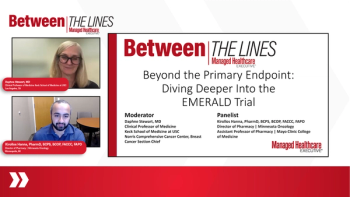
Final Takeaways of the GALAXI-2 and GALAXI-3 Trials From Lead Investigators
Panelists discuss how the GALAXI trials’ limitations include exclusion of patients with penetrating/stricturing disease and perianal fistulizing disease and pediatric populations, while emphasizing key takeaways for different stakeholders: Patients can expect strong symptomatic relief with endoscopic healing and excellent safety, providers gain a rigorously-tested first-line treatment option with evidence-based positioning in treatment algorithms and payers should recognize the high-value therapy with potential long-term cost savings through durable remission and reduced disease complications.
Episodes in this series

Final Takeaways from GALAXI-2 and GALAXI-3 Lead Investigators
Study Limitations and Future Research Directions
Despite the rigorous trial design, several limitations of the GALAXI studies were identified by investigators. The exclusion of patients with penetrating or stricturing disease phenotypes represents a significant limitation, as these aggressive presentations are commonly encountered in clinical practice and require therapeutic consideration beyond surgical intervention. The study population was limited to moderate to severe luminal Crohn’s disease, excluding patients with perianal fistulizing disease and stomas and pediatric populations. Additional limitations include the absence of head-to-head comparisons with anti-tumor necrosis factor agents, vedolizumab, or other IL-23p19 inhibitors, and the lack of transmural healing assessment as an end point. However, ongoing studies, including perianal fistulizing disease trials and the REASON study evaluating transmural healing, will address some of these knowledge gaps in the future.
Key Messages for Different Stakeholders
For patients, the primary takeaways emphasize symptomatic relief combined with endoscopic healing that impacts long-term disease progression risk, supported by an excellent safety profile. Providers benefit from the rigorous triple-dummy, treat-through design that reflects real-world clinical practice patterns and aligns with STRIDE-II recommendations across short-term, intermediate and long-term treatment targets. The head-to-head comparison with ustekinumab provides valuable comparative effectiveness data for clinical decision-making. For payers, the emphasis centers on robust efficacy, durability, sustained remission and absence of unexpected safety signals, potentially reducing disease-related complications, steroid dependency and associated healthcare costs while supporting formulary inclusion discussions for this evidence-based treatment option.
Clinical Positioning and Value Proposition
Investigators positioned guselkumab as potentially representing the optimal balance of efficacy without compromising safety, making it an attractive first-line advanced therapy option. The combination of potent evidence-based efficacy, superior endoscopic healing data, excellent safety profile and flexible dosing creates a compelling clinical value proposition. For clinicians, guselkumab offers confident positioning within treatment algorithms, particularly for patients without specific contraindications such as active fistulizing disease or extraintestinal manifestations. The superior comparative effectiveness data against ustekinumab, combined with durable outcomes and potential long-term healthcare savings through reduced complications, support its consideration as a high-value therapy that should not face unnecessary access barriers from payers seeking to optimize patient outcomes and healthcare resource utilization.
Newsletter
Get the latest industry news, event updates, and more from Managed healthcare Executive.




















































